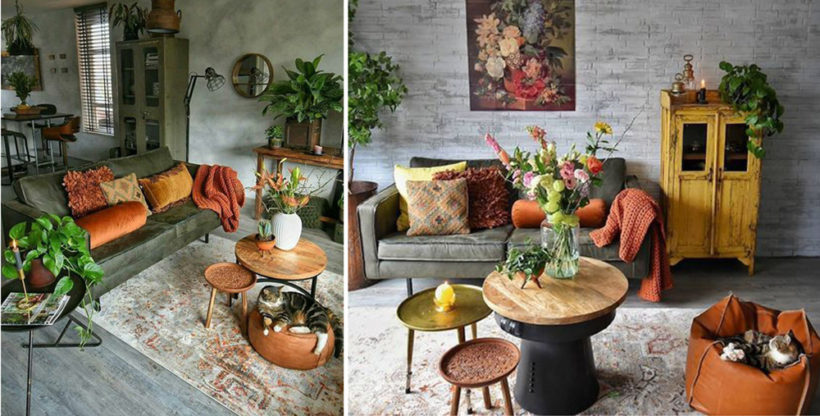
The architecture of your house may express who you are and tell a story via the colors and styles you pick. As a result, your house should genuinely reflect who you are because your house is your refuge.
A house is more than just a structure in which to live. It is also a place where we may learn about ourselves and be ourselves. Personal home interior designs tailored to the owner’s personality can form an unseen tie between the house and the owner. This might also be anything that is one-of-a-kind.
Here are some pointers for those who wish to design or refurbish your house to reflect your personality.
Begin By Inquiring Deeply About Your Personality
If you want to decorate your home design to your personality, you should start by asking a few easy questions. You should be able to answer this fundamental question yourself. Here are a few examples of questions:
- What is an essential thing in your life?
- What makes you happy, cheerful, and inspired?
- What items, locations, or activities make you feel the most at ease and relaxed?
After you have answered the following questions, you can go to the next round.
Choose the Design Style You Want
When redesigning your house, be sure to incorporate design style adjustments. Each interior design concept has a unique expression. As a result, you must select an interior design that complements your personality.
A minimalist design style is appropriate for someone with a closed, practical, and fastidious disposition. This is because minimalist interior design retains the practicality of furniture utilization while creating a basic appearance.
Meanwhile, if you are open, care about the environment, and have a solid social attitude, you might try using a Scandinavian design. This is due to the Scandinavian style’s use of warmth in its design.
Industrial style might be chosen for those with a strong, honest, and straightforward personality. This home design’s unpolished and rugged appearance perfectly represents your personality. Meanwhile, those of you who are creative might use an eclectic design interior to accommodate your ingenuity.
You may blend more than one interior design style in a space since you don’t have just one personality. Combining two or more styles in a single home is feasible.
Make a Space That Truly Reflects Your Personality
Many people nowadays have new habits and hobbies. As a result, it is vital to have a specific room in the house that is focused on enabling people to feel more relaxed.
For example, someone with a closed personality will want greater personal space. As a result, a more secluded and peaceful area, such as the den or study room, can be provided in the house. A room divider backed by an acoustic board can create a closed and tranquil ambiance in the space.
If you are more open, you will naturally choose a more open study or workplace with a high degree of interaction. The long table may be used for more than one person to study or work. Aside from that, choose a vibrant color palette and a more diversified workspace. A bean bag or daybed facing the home’s exterior demonstrates this variant.
Consider The Amount Of Requirement As Well As The Value Of The Additional Furniture Functions
When replacing or adding furniture, make sure you grasp the amount of requirement and the function value. Use changeable furniture to suit your requirements and individuality better.
Choose more detailed furnishings if you are open, lively, and active. These pieces of furniture are frequently more expressive, feature bright colors, appear more inventive, and integrate a range of designs.
In the meantime, pick furniture with a basic style if you tend to be closed, steady, and organized. This simplistic furniture usually features vivid colors and geometric designs that make a great impression.
Select a Color That Will Become Your Personality Identity
You must realize that each hue has a distinct meaning, impact, and character representation. As a result, select a hue that complements your user personality. Also, consider the type and purpose of the room’s use.
For example, in a child’s room, it is recommended that you use a range of bright hues, including the child’s favorite color. Most people with closed personalities in the standard room choose cold, monotone hues. This hue is also used in the creation of geometric forms and firm.
Another is with someone outgoing. Typically, this individual will blend warm and bright colors throughout the space. This is because bright colors appear more welcoming, storytelling, and expressive. It is also feasible to employ very contrasting hues. Some examples are blue and orange, red and green, yellow and purple, and so on. This area also has a more organic and dynamic mix of forms.
Bottom Line
The decoration appears essential in house interior design in establishing character and boosting self-reflection. Each family member has a set of hobbies, collections, interests, and personalities. As a result, a straightforward approach to add individuality to the house is to incorporate unique touches that are meaningful to the occupants.
Members of a family who are more organized and open, for example, can show pictures with personal recollections and arrange them on a display cabinet. Similarly, if other family members enjoy collecting specific objects, they might give their collection a personality through room design.
Another example comes from the step of color choices. Those with secretive personalities might select a room décor with a dark theme. Meanwhile, suppose you have a joyful personality and are friendly, adaptable, and sympathetic. In that case, you may use colorful couch cushions as a room décor that reflects your personality. Those with a more detailed personality might add classic-style décor to create a luxurious atmosphere.
These are some considerations to make when renovating or redesigning your home design. Make your house a place where you may learn more about yourself. This will ensure that your property is an accurate representation of your personality.